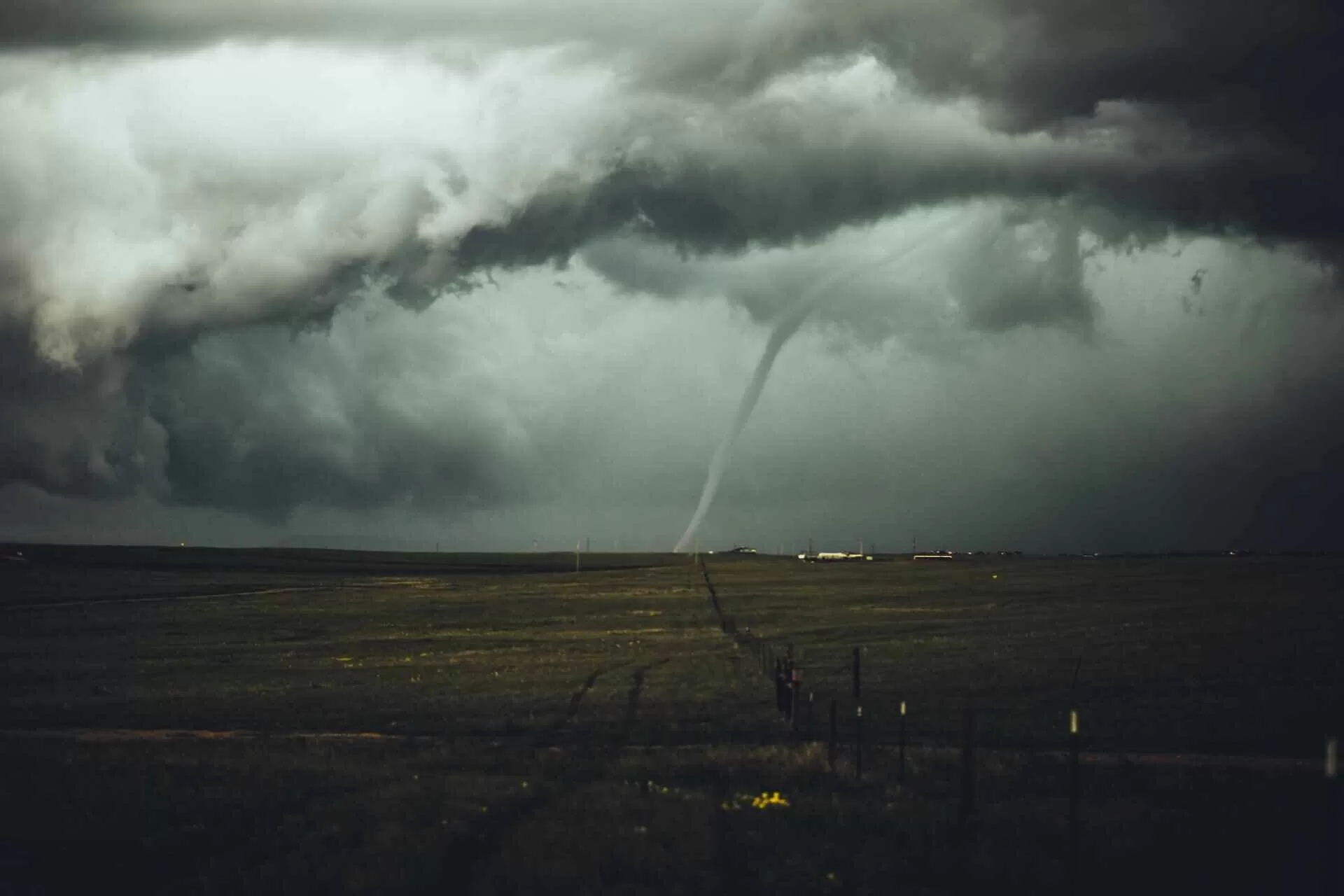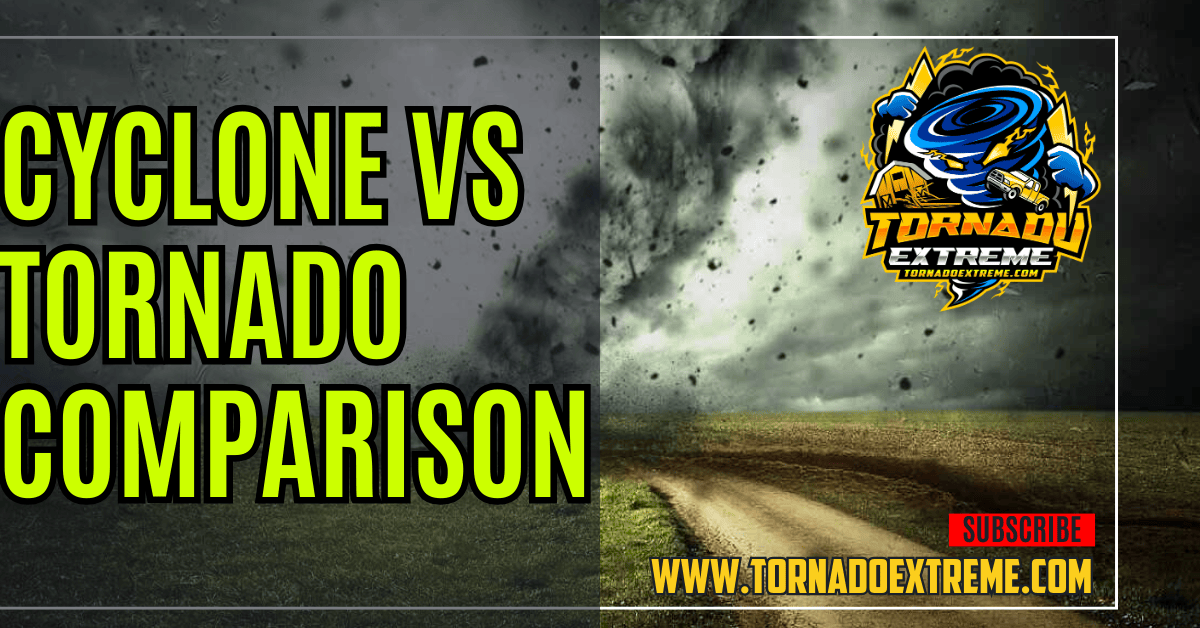Differences: Cyclone Vs Tornado
Cyclones and tornadoes are two terrifying natural phenomena that everyone finds interesting, yet equally fears. Understanding what makes them different however can help people in vulnerable areas to protect themselves. We’re going to get into the nitty gritty of these two powerful forces, discussing their similarities as well as formation, characteristics, impacts, and safety measures.
What’s a Cyclone?
Cyclones are storms with powerful winds that spiral around a central point causing it to move. They typically form over the South Pacific and can move at speeds of 20-30 miles per hour which allows them to cover vast areas usually having diameters of over one hundred miles. Typhoons and Hurricanes fall in the same category as cyclones due to their strong winds and heavy rainfall but they strike different parts of the world with varying names. Typhoons hit mostly the West Pacific and Indian Ocean while hurricanes slam down on the Northeast Pacific and North Atlantic regions.
The National Hurricane Center has been giving tropical storms common male or female names for more than fifty years now. Hurricane Katrina was one of them when it struck India in 2005.
On top of being destructive by nature, cyclones also tend to have environments impact as well as effect local communities.
Heavy rainfall from these storms cause massive floods which then lead to landslides taking out the infrastructure underneath. Some cases even see people getting displaced from their homes which unfortunately leads to some losing their lives. This is why understanding how natural disasters compare with each other such as tornadoes is vital so governments can be prepared in case something like this occurs again.

Definitions of Hurricanes and Tornadoes
Hurricanes and tornadoes both share destructive power but they’re quite distinct from each other when you dive deeper into what they are exactly. A hurricane consists of high winds, heavy rainfall, storm surges that all wrap around warm ocean waters.
On the flip side, a tornado is primarily known for its smaller localized storms. It forms from severe thunderstorms and consists of air rotating in a column.
Tornadoes are mostly known for their destructive power. They can cause large scale destruction to buildings and landscapes in a relatively short amount of time.
While hurricanes can be predicted days before it occurs, tornadoes form rapidly with little to no warning at all. Despite their differences though, both of these forces have the capability to cause tremendous impacts on communities. This is why having emergency plans in place is vital so we can minimize that effect as much as possible.
We covered the similarities between hurricanes, typhoons, and cyclones, but let’s move onto tornadoes. What are they, and how do they differ from cyclones? Tornadoes are violent storms that share their predecessor’s powerful rotating winds—winds so strong that they surpass 40 miles per hour while spiraling into a column. These winds can exceed 300 mph when swirling around in a tornado.
Like cyclones, tornadoes rotate in opposite directions depending on what hemisphere you’re in. In the north, they swirl counterclockwise; in the south, they spin clockwise. They both bring heavy rainfall too. The threat of these two weather conditions is very real as well. This is why meteorologists around the world tirelessly study them to gain an early warning system. The use of a comparison chart helps in explaining what’s the difference
Both cyclones and tornadoes can be detected by commonly used Pulse-Doppler radars.
Tornadoes typically form over land through severe thunderstorms that stretch from sky to ground with funnel shaped clouds. On the other hand, cyclones develop above warm ocean waters wherever it’s tropical enough for them to spawn. Tornadoes are known for their unpredictability too, often occurring without any warning at all—unlike cyclones which usually have some time before landfall.
Despite their differences though, both pose considerable threats to communities near them and surrounding areas. Because of this, scientists have been developing advanced detection systems to help predict disasters like these before it’s too late.
Cyclones and tornadoes are two dangerous atmospheric phenomena known for widespread destruction. Although found on different parts of Earth — depending on where you live — , each has common characteristics with its counterpart such as violent wind speeds and heavy rain causing flood abatement . These properties also make it hard to predict accurate forecasts because of how fast they appear out of nowhere.
Knowing this information allows us to see their destructive potential, and hopefully, prepare ourselves for it when the time comes.
See also: Green Sky Tornado: Why Does the Sky Turn Green?
Understanding What is the Difference Between a Cyclone and a Tornado
While these two spiraling storms share some similarities in ways that they destroy everything in sight, they differ greatly when considering their origins. Knowing how different each other’s formation is helps us understand what makes them behave so differently and tackle the unique problems they bring.
Formation
Cyclones and tornadoes could not be more dissimilar when forming. Cyclones cultivate themselves around low pressure centers where high winds swirl around it. These storms take humid air from tropical regions, pushing it over warm ocean water which later condenses. After this process completes, a low-pressure center forms as higher-pressure air moves in causing this swirling motion. With every revolution this storm gains strength.
Tornadoes are formed within low pressures areas too but through an entirely different process. When hot moist air from one place collides with cold dry air from another, a large thunderstorm brews up — which often occurs when polar cold air meets hot tropical air; altogether making up Tornado Alley — the United States’ most dangerous spot for tornadoes.
Place of Occurrence
The northern hemisphere is no stranger to tornadoes since majority of them hit America on their path to destruction before reaching any other continent besides Antarctica. On the other hand cyclones need hot moist beach-like conditions to form over warm ocean waters all throughout tropics of the planet.
The Pacific region holds the world’s record for most cyclones. That’s because the warm waters of the Pacific Ocean create optimal conditions for cyclones to form, making it prime real estate for these natural disasters. The Indian Ocean region is also known for its cyclone activity, specifically in the Bay of Bengal and Arabian Sea. These areas experience a high concentration of storms due to warm, moist air and favorable atmospheric conditions.

Size
Tornadoes are often described as cyclones on crack—smaller and more powerful. Tornadoes typically measure in yards or meters in diameter while their larger counterparts can stretch across several hundred miles. This size difference results in tornadoes being more destructive locally while cyclones cover a wider range, so even though they might be weaker individually, they tend to cause greater damage overall under certain low pressure conditions.
The breadth of cyclones allows them to generate storm surges that result in severe flooding in coastal regions as well.
Damage
Being much smaller than their relatives means tornadoes don’t usually inflict widespread damage. However, there are exceptions; one particular tornado that occurred in Bangladesh killed 1,300 people alone. Cyclones have a notorious history of wreaking havoc on entire communities: an 1839 storm killed over 300k people in India and another one in 1970 claimed at least 250k lives in Bangladesh.
Their size does not only affect human life but also structures and property. Such destruction has led to billions of dollars worth of damages and long-term consequences for affected communities.
Frequency of Occurrence
Cyclones may be deadlier than tornadoes but at least they aren’t as common. Worldwide, there are only about ten to fifteen cyclones per year on average compared to over 1,200 tornadoes just here in the US alone—it seems America gets all the windy weather! The global annual count of tornadoes totals several thousands including those that occur within various conditions.
Cyclones and tornadoes are known to have a devastating impact on the areas they hit, but these events are not frequent. However, in the case that they do happen, the amount of damage caused can be extremely high. The destruction caused by cyclones and tornadoes ranges from loss of life to complete destruction of property. Because of this, it is so important for every community to have an emergency plan ready to activate in times like these.
See also: What is a Rain Wrapped Tornado? Severe Weather
Weather
The main difference between a cyclone and a tornado is that one spins clockwise while the other does not. Cyclones usually bring heavy rainfall with them which is why they’re associated with tropical regions. Tornadoes also may bring lots of rain, but they don’t bring as much as cyclones tend to. Instead, when you see a tornado you should expect hail and sleet.
Tornadoes are known for having very fast winds which can reach over 300 miles per hour. These quick winds can be very dangerous when it comes to buildings and infrastructure because they will often end up damaging or destroying them. Cyclones differ because their winds move slower than those of tornadoes, however their size makes up for it. They can still cause just as much devastation but over a wider area.
Measuring Intensity and Damage
Different countries use different scales (Beaufort Scale or Saffir-Simpson scale) to measure how intense cyclones are based off how much wind speed they produce during its rotation. Ranging all the way from minimal house damage and destruction of plantlife up to complete widespread destruction that seems impossible, with wind speeds ranging from 74 mph to 156 mph.
The strength measurement systems (Fujita (F), Enhanced Fujita (EF), TORRO (T)) rate tornados on how damaged things get during its path. Minimal damage would be classified as F0 or EF0 or T0 with no more than light damage to trees or houses. Massive amounts of damage, the kind that you see in movies and wonder how it even happened would be (F5, EF5, T11). If you’re wondering about the United States tornados, 80% are in the least concerning category EF0 and EF1 (T0-T3), less than 1% are violent storms (EF4, T8 or more).
These storms can cause a lot of destruction not only for buildings but also with natural habitats. For more detailed analysis open up hurricane vs tornado comparison chart. The storms differ not only with their wind speeds but also what causes the wind speed to rise like rainfall and storm surges. Creation is one thing but if cyclones and tornadoes were better understood then scientists could predict their behavior and figure out how to stop them from doing any harm.
The effect of a cyclone can be disastrous. These monsters destroy everything in their path and take out coastal areas and inland regions with ease. The reason they are so dangerous is because they have a combination of things going for them: powerful winds, heavy rain, and storm surges. All three of these components lead to catastrophic flooding, infrastructure damage, and loss of life. It’s really hard to understand just how destructive a cyclone is until you’re in one or near its path. After it’s over, rebuilding the communities it destroyed is no easy task.
Tornadoes vs Cyclones
Though tornadoes and cyclones are similar in some ways, there are many differences between the two forces of nature. Understanding what makes them different from each other can come in handy when trying to figure out which one is happening so safety measures can be taken accordingly.
See also: Which State Has the Most Tornadoes and Why It Matters
Formation and Characteristics of Tornadoes
Funnel-shaped clouds that reach down from the sky are a good sign that a tornado is coming your way. If this happens then you’re about to experience one violent windstorm that’ll do some serious damage if it decides to touch ground. Typically when one forms within severe thunderstorms, swinging winds start ripping trees out along with whatever else gets unlucky enough to be in its path.
When rating these deadly windstorms based on the Enhanced Fujita scale (EF), it has become clear that they mostly follow the same patterns every time they form.This scale helps tell us how fast the estimated wind speeds were during recorded times before damage was done by twisters themselves. Knowing all this information allows experts to warn people better.If we didn’t know as much as we do now about tornadoes then taking early action would be almost impossible.
Damage Caused by Tornadoes
Everything around a tornado gets destroyed in seconds thanks to the high-velocity winds caused by these monsters.Like mentioned earlier, buildings get torn apart like paper houses and trees get uprooted faster than a kid can knock down a block tower. The high-speed winds they produce paired with the debris that gets thrown around is the perfect recipe for severe injury and even death. Tornadoes are unpredictable, which makes them so hazardous to everyone living in an area where they could form. If you aren’t prepared or told by experts about an approaching one this could mean your life.
Contrasting Features of Cyclones and Tornadoes
Though they both bring mass destruction, there are many features that set cyclones and tornadoes apart from each other. The scale of the two forces is first thing that clearly makes them different.When it comes to cyclones, they are huge storm systems that tend to form over warm ocean waters. On the other hand, tornadoes are small violent windstorms that don’t last long but do a lot of damage during their short existence.
When a cyclone hits, it affects everything in its path by flooding every street and knocking everything over. Tornadoes only destroy wherever they hit- not widespread across towns like cyclones do. Safety measures for these two similar disasters need to be tailored for their individual characteristics because what works well for a tornado won’t work as good on a cyclone.
Safety Measures
Knowing how much damage these natural disasters cause us should be enough reason to take any safety measure possible when one threatens the area. There’s really no way to ever fully prepare yourself for something as dangerous as one of these events but doing what you can within your limits will give you some peace of mind when it does come time to experience one firsthand.
Safety measures for cyclones include securing homes and property, stocking up on emergency supplies, and heeding evacuation orders from local authorities. In coastal areas prone to them, robust infrastructure such as seawalls and storm surge barriers can provide essential protection against flooding and erosion. For tornadoes, safety measures include seeking shelter in a sturdy building, such as a designated storm shelter or a reinforced interior room, and staying informed through reliable weather alerts and warnings. Community-wide preparedness efforts, including drills and emergency response training, are also critical for minimizing the impact of both.
Historical Cases of Destructive Cyclones and Tornadoes
A lot of history has been recorded by the world of destructive cyclones and tornadoes that have left a trail devastation behind them. Some worth mentioning are Hurricane Katrina in the United States which was catastrophic with its widespread destruction ,to the deadly Super Outbreak of tornadoes in 1974., etc; these historical events serve as reminders of just how strong yet deadly these natural disasters can be.
The destruction caused by these historical cases highlight the need for continuous research, preparedness, and resilience-building efforts to mitigate the impact of future events. Learning from past experiences is key alongside understanding what unique challenges each disaster poses so communities around the globe and governments develop more effective strategies for disaster risk reduction and response.

Conclusion
There’s no doubt about it that cyclones and tornadoes are no joke! They’re fierce forces not to be reckoned with that demand respect, understanding alongside preparedness. By unraveling their differences we individuals will be able to take proactive steps toward keeping ourselves safe during those times whilst we work towards rebuilding our homes after its wreaked havoc on us leaving us vulnerable.

